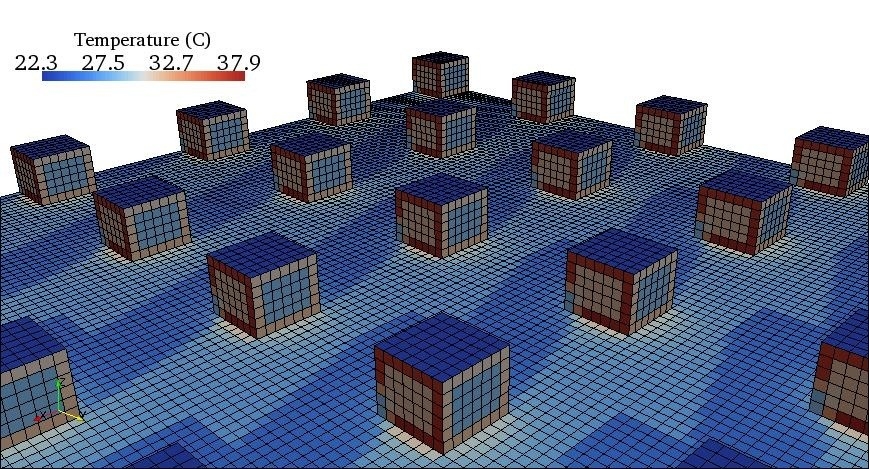
News
Cool pavements = warm buildings = rising electricity bills
November 8, 2012 - Engineers at the University of California San Diego have found that replacing old, heat-trapping paving materials with highly reflective materials (cool pavement) could actually lead to higher electricity bills for surrounding buildings.
November 9, 2012 By Anthony Capkun

“Our findings suggested that some benefits associated with reflective pavements are tied to the environment where they’re used,” said Jan Kleissl, a professor of environmental engineering at the Jacobs School of Engineering at UC San Diego. “More studies are needed to determine where these new materials would be most beneficial.”
PHOTO: A simulation shows that while pavements covered with new, heat-trapping materials remain cool, the building’s facades facing them are quite warm.
The new materials could have a positive effect in areas where buildings can automatically respond to additional sunlight because they are equipped with smart lighting solutions, such as dimmers run by photosensitive cells. Buildings without these features, however, do not fare as well.
The increases in consumption of cooling energy due to the new pavements ranged anywhere from 4.5% to 9.5% for typical newer and better-insulated buildings, and from 5% to 11% for older structures.
In the researchers’ study, windows facing the reflective pavements got 40% more daily sunshine in summer as windows facing more traditional paving surfaces (in winter, the difference was only 12%). That, in turn, increases temperatures inside the building, especially when the windows do not have solar-control coating. So the buildings’ occupants turn up the air-conditioning. Meantime, office buildings that have smart lighting or energy-conscious occupants may actually benefit from the additional sunlight by being able to reduce energy use due to artificial lighting.
The worst-case scenario is when these new cooler pavements are used in office park settings with many mid-rise buildings with large window areas. The best-case scenario would be to use the new paving materials near buildings without windows, on roads or large parking lots that are not surrounded by buildings, or in warehouse districts where structures don’t have air-conditioning, Kleissl said.
Print this page